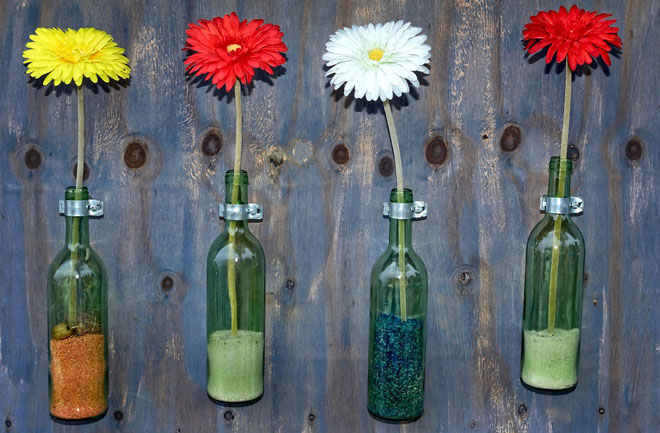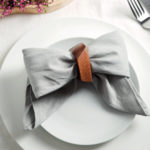Weddings cost a great deal. From money and time to energy and emotions, you’ll be spending more than you thought when he popped the question. But there are certain ways you can turn your nuptials into a less costly affair, specifically in environmental terms. Cut down your financial expenditure and your carbon footprint, as well as avoid unnecessary waste, by taking these five eco-friendly ideas into consideration.
1 Electronic invites
Wedding invitation are always special. They’re usually fancy and detailed, and mark the start of a new chapter in the happy couple’s lives. That being said, creating, ordering and sending them costs time, effort and a great deal of paper. And while many might say using recycled paper for your invites is a good way to help the environment, we say there’s an even better one – email! It gets the job done quickly and ensures that nothing’s been lost in the mail. Plus, designing your invitations digitally is relatively simple nowadays so there’s absolutely no reason to use a shred of paper when telling your loved ones to ‘SAVE THE DATE’.
2 Alternative lighting
There are so many ways of adding light to your wedding without using too much energy. You can hold the event outdoors during the daytime, as long as you’ve ensured the weather will be fine. Or if your reception will continue well into the night, try some eco-friendly lighting options (there really is a wide range of them). Candles create a romantic ambience, of course, but can be extinguished quickly. The solution? Rechargeable candles or lanterns that use batteries or solar power. You’ll be able to keep these outside during the ceremony then bring them into the reception venue later on. If you’re not too big on candles or a plethora of lamps, power-saving light bulbs are always a popular and energy-efficient alternative to ordinary lighting.
3 Uncooked, locally sourced, and vegan and vegetarian food options
Offering your guests a buffet of uncooked foodstuffs is a great means of being eco-friendly and catering to those on healthy and organic diets. If yours is a summer wedding, there are a few options to choose from – think cured meats, a variety of salads, fruit and cheese boards, and even bread and crackers served with spreads and preserves. You can also source your food from local vendors, which lessens the amount of transportation emissions, while serving up only vegan or vegetarian dishes is a commendable decision and won’t limit you in terms of food (in spite of what some snarky commentators might say).
4 Sustainable décor and wedding favours
People tend to overuse wedding decorations that ultimately go to waste after the big day (think of those cut flowers and paper and plastic lanterns your cousin has stored in her garage – and she got married nearly three years ago!). So while place cards might be unavoidable, you can still choose materials that last and are reusable. Cloth napkins don’t need to be thrown away after the first use and stones make elegant, versatile and practical additions to any setting. You can even place a colourful pebble on each napkin to keep it put then tie or stick a place card on the top. When it comes to flowers, orchids are a beautiful choice and endure if maintained properly. Succulents work well too and can also double as wedding favours. On that note, favours made from durable materials such as wood, cork, stoneware and glass are far more eco-friendly than those made of paper or plastic.
5 Donations and recycling
You’ll be left with a lot to clean up at the end of your wedding but a vast majority of it can be put to good use. If you foresee leftover food, make a plan early on to donate it to a food bank or any other organisation. If you’ve used cut flowers as decorations, you can also donate these. As for all those disposable items, like paper napkins, designate a space for each type to be thrown away and recycle those made of glass, tin and hard plastic. What’s more, bottles and cans may be reused on other occasions. In fact, if you’ve already got items like these (wine bottles, jars and tins), use them at the wedding as candleholders, flower vases or storage for wedding favours.
Photography pixabay.com, pexels.com, Archives

























